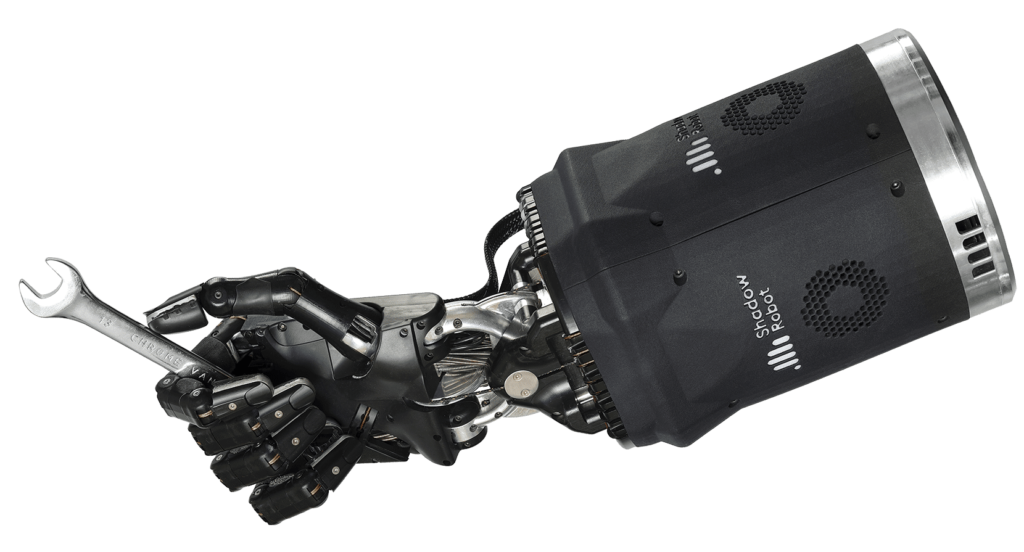Google DeepMind is now employing a new dexterous and durable three-fingered robotic hand to advance the development of artificial intelligence in robotics.
Developed by UK-based Shadow Robot Company, this innovative robot hand is designed to provide comparable force output and movement precision to the human hand, paving the way for more advanced robotics research and applications.
The Shadow Dexterous Hand
The new robot hand is part of Shadow Robot’s Dexterous Hand series, known for its ability to closely replicate the kinematics and skill of the human hand. The hand is sized and shaped like an average male hand and offers 24 degrees of freedom, allowing for advanced manipulation and precise control.
Some key features of the Shadow Dexterous Hand include:
- Tendon-driven system for postural stability and dexterous motion
- 20 integrated motors for independent finger movement
- Adduct and abduct movement capabilities
- Multiple tactile sensing options at the fingertips
One of the most notable aspects of the new 3-fingered robot hand is its exceptional durability. Engineers claim that the hand can withstand repeated abuse, such as being pounded on the fingers by pistons from various directions or even being smashed with a hammer. This robustness is crucial for the trial-and-error learning process to train AI in robotics.

The hand is constructed using a combination of durable metals and plastics, such as aluminium, brass, acetyl, polycarbonate, and polyurethane flesh. This blend of materials ensures strength and flexibility, enabling the hand to tackle a wide range of tasks efficiently and precisely.
Google DeepMind’s involvement with this new robot hand highlights its potential for advancing AI and robotics research. The hand’s durability makes it particularly well-suited for reinforcement learning, which allows robots to learn through trial and error by repeatedly interacting with their environment.
Researchers can train the robot hand in simulation using neural networks and reinforcement learning algorithms. The resulting data can then be transferred to the physical robot hand, enabling it to perform the learned tasks in real-time and real-world scenarios.
To maximize data acquisition and support advanced research, the Shadow Dexterous Hand has many sensors that provide precise data up to 1kHz. The hand features:
- 20 motors with integrated temperature, voltage, and current sensors
- Strain gauges on tendons for load monitoring
- 26 Hall effect sensors for joint position tracking (0.2-degree resolution)
- An IMU in the palm with a three-axis gyroscope and accelerometer
- Pressure Sensor Tactiles (PSTs) in the fingertips for enhanced tactile sensitivity
These sensing capabilities provide researchers with a wealth of data, enabling them to push the boundaries of robotics and AI research. By providing a platform for more advanced and efficient research, this technology could accelerate the development of intelligent robots capable of performing complex tasks in various industries.
As research progresses, we may see further advancements in robot hand design, such as increased agility, improved tactile sensing, and even more human-like functionality. The insights gained from using this robot hand in AI research could also contribute to developing more sophisticated machine learning algorithms and control systems.
As Engineers continue to push the boundaries of what is possible with robotics and AI, tools like this could play an increasingly important role in shaping the future of these fields by providing researchers with the means to conduct more advanced experiments and simulations. This tech brings us closer to developing brilliant and adaptable robotic systems.
TLDR:
- Google DeepMind is testing a new, highly durable 3-fingered robot hand developed by Shadow Robot Company
- The hand is designed to withstand damage during AI trial-and-error learning
- It features advanced dexterity, sensing capabilities, and a robust design
- The technology could accelerate robotics and AI research, leading to more intelligent and adaptable robotic systems








